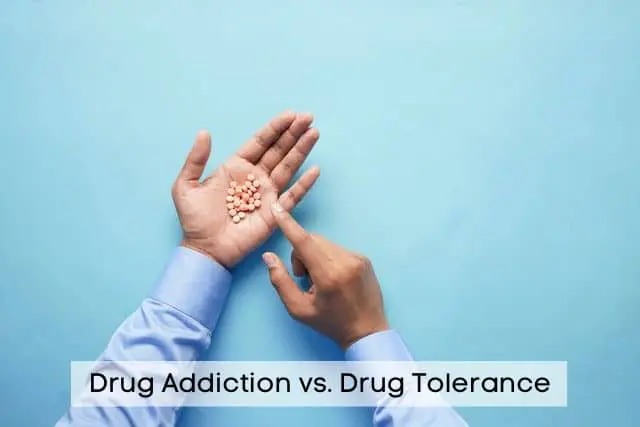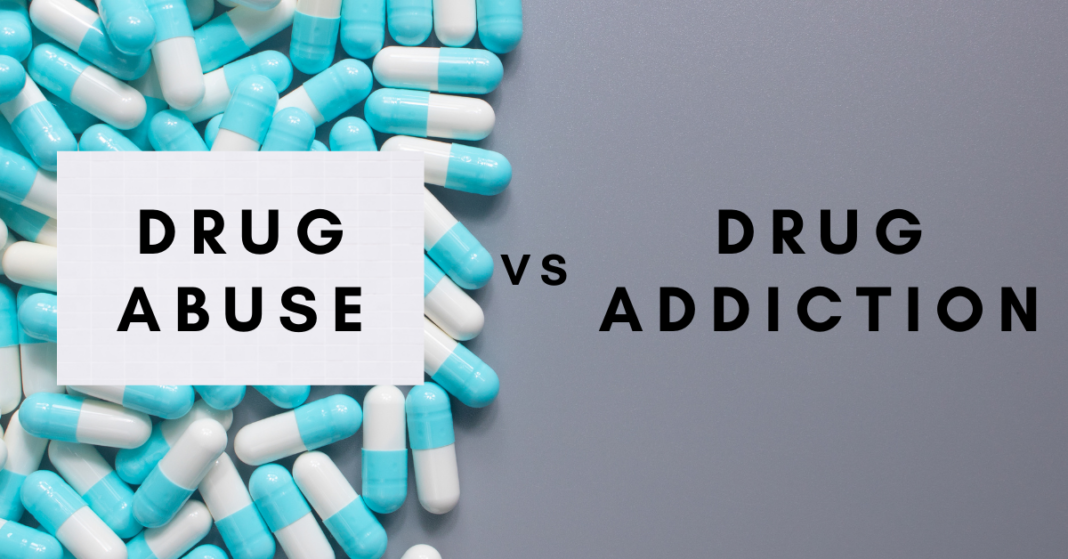Drug addiction
“Welcome to a journey through the intricate landscape of drug addiction. In this article, we delve into the essence of addiction, dissecting its nuances, exploring its impact on the brain, and identifying those most at risk. From recognizing signs to preventing prescription painkiller addiction, join us in unravelling the layers of this complex issue. Let’s embark on a path of understanding, awareness, and ultimately, empowerment against the grip of drug addiction.”
Understanding Addiction: Differentiating Misuse and Tolerance

Drug addiction is a multifaceted issue that extends beyond mere substance use. It’s crucial to distinguish between addiction, misuse, and tolerance to comprehend the complexities. Misuse involves using a substance in a way other than prescribed or intended, often for recreational purposes. Tolerance occurs when the body adapts to a drug, requiring higher doses for the same effect.
Addiction, on the other hand, encompasses a compulsive need for a substance despite negative consequences. It involves psychological dependence, where the individual feels an intense craving and loss of control over their drug use. Differentiating these aspects is vital for effective intervention and tailored treatment.
Understanding the progression from misuse to addiction is a key focus. Misuse can escalate into addiction as the brain undergoes changes in response to prolonged substance use. Neural pathways adapt, reinforcing the cycle of dependence. Recognizing these early stages is pivotal for timely intervention and preventing the downward spiral into full-blown addiction.
In summary, this section delves into the spectrum of substance use, emphasizing the importance of recognizing misuse, tolerance, and addiction as distinct yet interconnected components. By understanding these nuances, we equip ourselves with the knowledge needed to address each stage appropriately and work towards effective prevention and intervention strategies.
The Neurological Impact: How Drugs Affect Your Brain

Drug addiction is not merely a behavioral issue; it fundamentally alters the intricate workings of the brain. Comprehending these alterations in the nervous system is essential to understanding the essence of addiction.
Drugs frequently target the brain’s reward system when they enter the body.This system, primarily involving the release of dopamine, is crucial for reinforcing behaviors and emotions. Drugs hijack this process, leading to an artificial surge in dopamine levels. Over time, the brain adapts to these elevated levels, diminishing its natural ability to produce dopamine. Addiction is mostly caused by this rewiring of the reward system, which makes people dependent on the drug for pleasure.
Drugs can also affect the brain’s ability to control impulses and make decisions. The prefrontal cortex controls these mental functions, and impairments to this region increase risk-taking and impair judgment. This helps explain why individuals in the throes of addiction may continue substance use despite knowing the associated risks.
Furthermore, there is an impact on the brain’s stress-response system, which adds to the elevated sensitivity and relapse vulnerability. Comprehending these alterations in the nervous system illuminates the enduring and recurrent character of addiction. This part essentially sheds light on the substantial effects of drugs on the brain, highlighting changes in the reward system, impairment of cognitive abilities, and altered stress response. This information emphasizes the necessity of treating addiction holistically and acknowledging that it is a complicated interaction of behavioral, psychological, and neurological elements.
Risk Factors: Identifying Those Most Vulnerable
Drug addiction doesn’t affect everyone uniformly, and certain factors may predispose individuals to a higher risk of developing addiction. Understanding these risk factors is crucial for targeted prevention efforts.
Genetics:
Addiction vulnerability is significantly influenced by genetic factors. A higher genetic propensity for drug addiction disorders may exist in people with a family history of the diseases. Knowing one’s family background can help identify potential weak points.
Environmental Factors:
The surroundings in which an individual grows up can significantly influence their risk of addiction. Exposure to substance use, trauma, or a lack of a supportive environment may contribute to increased susceptibility. Recognizing and addressing these environmental factors is key to prevention.
Mental Health:
Substance abuse and co-occurring mental health illnesses can pose a twofold challenge. Adverse conditions like depression, anxiety, or trauma can make drug self-medication more likely.
Peer Influence:
Social circles and peer pressure play a pivotal role, especially during formative years. Individuals surrounded by peers engaging in substance use may be more inclined toexperiment. Promoting positive peer influences and education can mitigate these risks.
Early Exposure:
The age at which an individual is first exposed to drugs is significant. Early initiation increases the risk of developing addiction. Preventive education programs targeting youth can help delay or deter initial substance use.
Recognizing these risk factors allows for targeted prevention strategies. By addressing genetic predispositions, creating supportive environments, integrating mental health care, promoting positive peer influences, and delaying initial exposure, we can proactively work towards reducing the vulnerability of individuals to the grips of drug addiction.
Recognizing Addiction: Common Signs and Indicators

Identifying the signs of drug addiction is essential for early intervention and effective support. While the manifestation of addiction can vary, certain common signs and indicators offer valuable insights.
Behavioral Changes:
Shifts in behavior are often noticeable, including increased secrecy, withdrawal from social activities, or sudden changes in friend groups. Unexplained mood swings, irritability, or hostility may also surface.
Physical Symptoms:
Observable physical changes can indicate addiction. These may include changes in sleep patterns, weight loss or gain, dilated or constricted pupils, and poor hygiene. Trackable physical signs offer tangible evidence of potential substance abuse.
Neglect of Responsibilities:
Addiction can lead to a decline in fulfilling obligations at work, school, or home. Red flags include increased absenteeism, responsibility neglect, and a drop in performance in the workplace or at school.
Tolerance and Withdrawal:
Addiction is characterized by the development of a tolerance to a substance, requiring increasing dosages to provide the same effect.. Conversely, experiencing withdrawal symptoms when not using the substance is another indicator, showcasing physical dependence.
Financial Issues:
The financial toll of sustaining a substance habit can be substantial. Unexplained financial struggles, borrowing money, or selling possessions may signify the financial strain of addiction.
Denial and Secrecy:
Individuals grappling with addiction often engage in denial, downplaying the severity of their substance use. Secrecy and defensiveness when questioned about their behavior can be indicative of an underlying issue.
Recognizing these signs collectively offers a comprehensive view of potential addiction. It’s essential to approach the identification process with empathy and understanding, fostering an environment where individuals feel comfortable seeking help. Early recognition and intervention increase the likelihood of successful recovery and minimize the long-term impact of addiction.
Preventing Prescription Painkiller Addiction
The misuse and addiction to prescription painkillers have become a significant public health concern. Preventing the escalation from prescribed medication use to addiction involves a multi-faceted approach.
Medical Guidance:
The foundation of preventing prescription painkiller addiction lies in responsible medical prescribing practices. Healthcare providers must thoroughly assess a patient’s medical history, potential risk factors, and closely monitor the need for pain relief.
Patient Education:
Educating patients about the risks associated with prescription painkillers is crucial. This includes the potential for dependence, the importance of following prescribed dosage, and the necessity of promptly informing healthcare providers about any adverse reactions.
Alternative Pain Management:
Exploring alternative pain management strategies can mitigate the reliance on opioids. This may include physical therapy, non-opioid medications, or complementary therapies like acupuncture. Tailoring pain management to individual needs reduces the likelihood of opioid dependence.
Monitoring and Regulation:
Implementing prescription drug monitoring programs can track and regulate the prescribing and dispensing of controlled substances. This aids in identifying and addressing potential cases of misuse or addiction early on.
Community Awareness Programs:
Raising awareness within communities about the risks of prescription painkiller addiction fosters a proactive approach. Community-based programs can disseminate information, provide resources, and create a supportive environment for individuals at risk.
Safe Disposal Practices:
Encouraging proper disposal of unused prescription medications helps prevent their diversion for non-medical use. Community drop-off programs and educational initiatives contribute to safe disposal practices.
Access to Treatment Services:
Ensuring accessibility to addiction treatment services is vital. Removing barriers to treatment, such as stigma or financial constraints, encourages individuals to seek help promptly.
By combining these strategies, we create a comprehensive framework for preventing prescription painkiller addiction. The key lies in a collaborative effort involving healthcare providers, communities, and individuals, working together to address pain management responsibly and minimize the risk of opioid addiction.
Overdose Awareness: Recognizing and Responding to Symptoms
One important and perhaps lethal side effect of substance misuse is drug overdosing. Saving lives requires being able to spot the warning signs of a drug overdose and acting quickly.
Understanding Overdose Symptoms:
Depending on the substance, breathing problems, excessive sleepiness, disorientation, convulsions, and loss of consciousness are some of the symptoms of an overdose.
Skin color changes, such as becoming pale or bluish, can signal an oxygen shortage and impending danger.
Common Overdose Culprits:
Benzodiazepines, stimulants, and opioids are frequently linked to overdoses.
Polysubstance use, combining different drugs, increases the complexity and severity of overdose symptoms.
Immediate Response:
Call emergency services immediately if an overdose is suspected. Quick intervention is critical for a positive outcome.
If trained, administer naloxone for opioid overdoses, following local guidelines and laws.
Monitoring Vital Signs:
Stay with the individual and monitor their vital signs. Be prepared to perform CPR if necessary.
Providing accurate information to emergency responders, such as the type and amount of substance used, aids in effective medical intervention.
Post-Overdose Care:
Individuals who survive an overdose require medical attention and subsequent support.
Post-overdose care may involve connecting the individual with addiction treatment services and addressing underlying factors contributing to substance abuse.
Educational Initiatives:
Community-based education programs can increase awareness about overdose risks and response.
Training individuals, especially those in high-risk environments, in overdose recognition and first aid can save lives.
Preventive Measures:
Emphasize preventive measures, including harm reduction strategies such as not using drugs alone, testing substances for potency, and seeking medical advice before mixing medications.
By advocating for quick and effective response techniques, educating people about overdose symptoms, and supporting preventative measures, we can decrease the horrific effects of drug overdoses in our communities. It is our collective duty to ensure that individuals who are in danger and those nearby have access to the information and resources they need to handle this grave circumstance.
Support Systems: The Role of Family and Community

Drug addiction recovery is a difficult road, and creating a supportive atmosphere for those attempting to overcome addiction is greatly aided by the support of family and community.
Understanding Addiction as a Family Challenge:
Acknowledging that addiction affects the entire family is crucial. Family members often experience stress, guilt, and confusion, requiring support and education on addiction dynamics.
Open Communication:
Building a foundation of understanding and empathy within the family is achieved via open and honest communication.
Promoting communication about addiction, its effects, and the recovery process aids in the dismantling of obstacles and the lowering of stigma.
Educating Family Members:
Providing education on addiction, its causes, and the recovery process helps family members comprehend the challenges faced by their loved ones.
Dispelling myths and misconceptions contributes to a supportive atmosphere.
Participation in Therapy and Counseling:
Family therapy and counseling sessions offer a structured platform for addressing the emotional impact of addiction.
Involving family members in the therapeutic process helps rebuild trust and strengthen familial bonds.
Community Support Groups:
By taking part in community support organizations like Al-Anon or Nar-Anon, family members can establish connections with people going through comparable struggles.
A supportive setting where people share coping mechanisms and experiences strengthens a sense of community.
Empowering Communities:
Communities can contribute to a supportive environment by reducing the stigma associated with addiction.
Educational initiatives in schools and community centers can raise awareness and promote understanding.
Access to Resources:
Making sure people and families have access to tools like support groups, addiction hotlines, and counseling programs enables them to get assistance when they need it.
Collaboration between community organizations and healthcare practitioners can create a network of easily available resources.
Promoting Holistic Wellness:
Promoting an all-encompassing strategy for well being that includes mental, emotional, and physical well-being aids in long-term healing.
People can receive help on their road to recovery by adopting healthy lifestyle choices, such as exercise and diet.By recognizing addiction as a family challenge, fostering open communication, and establishing a network of support within communities, we create an environment conducive to recovery. The collective effort of families, communities, and support organizations is instrumental in helping individuals navigate the path to sustained wellness and resilience in the face of addiction.
Conclusion
In conclusion, navigating the complex terrain of drug addiction demands a comprehensive understanding of its various facets. From recognizing the neurological impact of substances on the brain to identifying risk factors and early signs, this exploration aims to arm readers with knowledge. By delving into preventive measures, overdose awareness, and the crucial role of support systems, we underscore the importance of a holistic approach to addressing addiction. It is not just an individual struggle but a challenge that implicates families and communities. As we advocate for informed medical practices, community awareness, and destigmatization, we pave the way for a society that is better equipped to prevent, identify, and support those grappling with drug addiction. Ultimately, this journey toward awareness, understanding, and support is a collective endeavor—one that empowers individuals to break free from the shackles of addiction and rebuild lives with resilience and hope.

